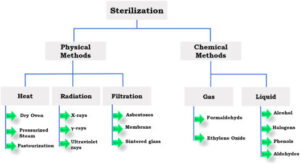A good question was raised by Rusty Crum, VP at C.G. Laboratories on LinkedIn as follows. “Just wondering if anyone has any experience as to which parameter of EO sterilization would increase the EO residuals more; EO dwell or EO concentration?
To be more specific, this is a 100% EO cycle, with 3.5 hours of EO exposure time and approximately 600 mg/L EO concentration. which one will increase the EO residuals more; increase the EO dwell 30 minutes or increasing the EO concentration to 660 mg/L?” He further went on to explain more by saying, “… my residuals are not too high, I just don't want to send my residual results over the limits with an adjustment of cycle parameters. Without getting too specific, product is a cloth material which is rolled up and packaged in Tyvek pouch (one side poly, the other side Tyvek) temp is 120-130F, but I understand if this doesn't provide enough information, I was wondering if there was any overall general understanding of which parameters would typically increase EO residuals more than the other.” An short response was provided to that question on LinkedIn, with a more detailed response below.
I believe that both increasing EO exposure time and increasing EO concentration have the potential to increase EO residues (EO & possibly ethylene chlorohydrin (EC) as well). There are many factors which influence the amount of EO residues (e.g. material composition, material thickness, packaging, etc.), which means that it would be nearly impossible to make a blanket statement as to which parameter would have the most impact in increasing residues.
I would submit to you that if you wanted to know which of these two parameters would have the most effect on residues for this particular product, you would have to do a controlled experiment to reach a definitive conclusion. Although that would make for an interesting exercise, the results would likely only be related to that specific product (the device plus its packaging), and I’m not sure from a practical standpoint that you want to go to that length.
If you want or need to increase the lethality of the cycle, and at the same time have a minimal impact on residuals, the first thing I would try, if you can do it, would be to increase the temperature of the cycle. Many people don’t immediately think of temperature as a factor in lethality in EO cycles, but it is one of the important contributors. Keep in mind what is known as the Q10 effect, which states that for every 100C (180F) rise in temperature, the rate of a reaction doubles. When applying this to EO sterilization, it means that one can theoretically cut the EO exposure time in half if the temperature could be increased by that amount. The product may not be able to take that much of an increase in temperature, but any increase should have a beneficial effect in increasing the rate of delivered lethality.
If you can’t increase temperature, and you still need additional lethality by increasing the EO exposure time or concentration, I might suggest that you consider an economic answer as to which parameter you change. By that I mean chose which parameter to augment based on the one that is less expensive to implement.
Additionally, if you have to increase the EO exposure time or concentration, think about possibly adding some additional post exposure steps to the cycle to aid in lowering the amount of the residues. This could take several forms including more post vacuum & washes (nitrogen and/or air), adding a hold at the lowest point of each of the post vacuums, adding steam during the back end of the cycle, etc.
As a word of caution, before implementing any of the steps mentioned above, be careful to ensure that there are no deleterious effects on product functionality and/or package integrity.



